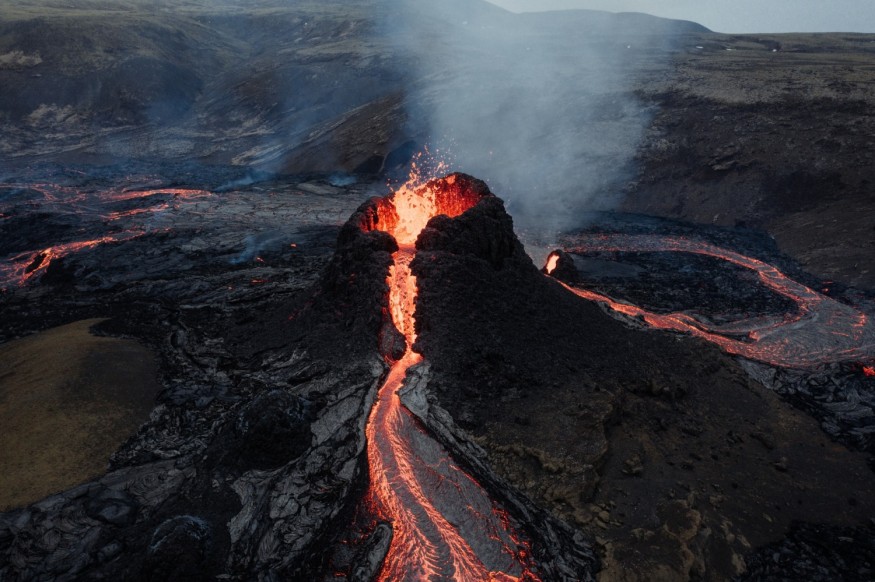The Iceland volcanic explosion provides a unique glimpse into the Earth beneath our feet. The recent Fagradalsfjall eruption in southwest Iceland has captivated the globe, including nature enthusiasts and scientists.

The eruption was especially significant because it allowed scientists to investigate magmas that had collected in a deep crustal lava reservoir yet were ultimately generated from the Earth's mantle (below 20 km).
Iceland's Volcanic Activity
Icelandic eruptions range from modest effusive eruptions in which lava flows softly from cracks and crater rows to huge explosive eruptions in ice-covered core volcanoes that create enormous ash plumes - literally where fire meets ice.
Iceland's strong volcanic activity is caused by a geological interaction between a spreading plate boundary on the Mid-Atlantic Ocean ridge and a large mantle plume generating a hot spot on the surface. They create a vast volume of magma, filling the holes in the crust caused by the spreading plates, resulting in regular eruptions in the rift zone.
The Icelandic eruptions are distinguished by effusions of molten basaltic lava from lengthy, parallel cracks. Such outpourings frequently form lava plateaus.
Intensive Study

A research team from the University of Oregon, Uppsala University, the University of Iceland, and the Deutsches GeoForschungsZentrum (GFZ) took advantage of this once-in-a-lifetime opportunity to collect lava samples every few days to create a time-integrated catalog of samples and to track the geochemical evolution of the eruption in unprecedented detail. The findings were reported in Nature Communications.
When volcanologists examine earlier eruptions, they usually have a limited perspective of the erupted materials-for example, older lava flows might be completely or partially buried by later ones. However, the eruption at Fagradalsfjall was so thoroughly observed and sampled that scientists could capture an Icelandic eruption's progress in near real-time.
Looking at Isotopes
The oxygen isotopes piqued the team's curiosity. Why? Because oxygen accounts for around half of all volcanic rocks, its isotope ratios are extremely sensitive tracers of the mantle and crustal materials. In this approach, oxygen isotopes can help scientists establish whether magma originated from the mantle or if it interacted with crustal materials on its route to the surface. However, in addition to oxygen, the extensive array of elements that make up volcanic rocks revealed some surprises. For example, the researchers discovered that this one eruption contained almost half of the total variety of mantle-derived magmas previously known for Iceland.
A Surprising Outcome
In summary, geochemical data demonstrate that magmas came from various sources in the Earth's mantle, each with its individual constituent properties, which fueled the most recent Iceland eruption. Scientists were astounded to discover that these domains had identical oxygen isotope ratios.
This was a surprising outcome that had never been seen at an active eruption. The work adds to our understanding of mantle dynamics. It refines mantle models for Iceland by providing fresh and persuasive evidence for different mantle-sourced magmas with consistent oxygen isotope ratios.
For similar news, don't forget to follow Nature World News!
© 2025 NatureWorldNews.com All rights reserved. Do not reproduce without permission.





